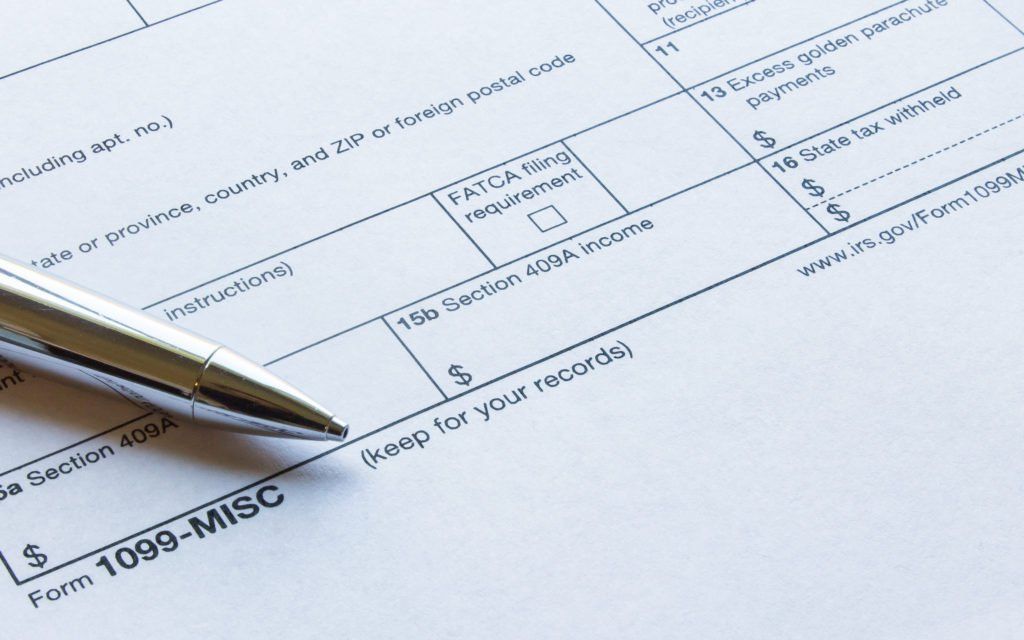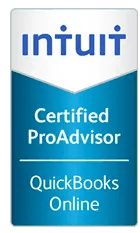1099s—The Ins and Outs
Processing 1099s can be confusing and frustrating.

Here are some facts you need to know!
General Rule: If you pay someone more than $600 in a calendar year for services, not material/product, then you are required to provide a 1099 showing the amount you paid. One tip is to collect a W-9 at the time of payment so you know if the business is a sole proprietorship, LLC or Corporation. If it is a corporation, then no 1099 is required. The 1099 is due January 31st. The 1096 form is not required if you E-File. If you file by paper then it is required.
Addressing the 1099: If the person you paid uses their Social Security number as a tax ID number, then the person’s full name must be on the first line of the 1099. If you list the business name by mistake, then you will receive a letter from the IRS saying that the name and ID do not match. Then the IRS may require you to withhold money from future checks.
Reimbursed Expenses: If you pay a subcontractor for expenses incurred, do NOT include that amount in box 7. If you receive a 1099 from someone with reimbursed expenses, like travel or postage, don’t worry. Show the full amount of income on your tax return and then show the full amount of expenses and it will net out the same. If you lower the 1099 amount on your return to “correct” it, that will trigger an audit.
Strict Classification Rules: If you hire a subcontractor, be sure that the state won’t deem the person as an employee. A few indications to strengthen your case are:
- You have a contract agreement between parties.
- The subcontractor invoices the business.
- The subcontractor has a business license. The business does not tell the contractor WHEN to perform the work or HOW to do their job. The subcontractor uses their own equipment and materials.
- The subcontractor is available to be hired by other companies. Governor Brown signed a bill that starting 01-01-12 if any employer is found to willfully misclassify a worker as an independent contractor, they penalties will increase to $10,000-$25,000 per violation.
- Here is a link to a 20 factor test to determine if the worker is an employee or a contractor: https://www.mdc.edu/hr/Operations/AFS/IRSFactorTest.pdf
Penalties : If you miss the deadline and file within 30 days, the penalty is $50. If you file after 30 days of the missed deadline, the penalty is $100. If you file after August 1, or do not deliver, or have an incorrect name/TIN Combo the penalty is $260. Intentional Disregard results in a penalty of $530.
Extensions : Extension on E-Filing –Form 8809: you will receive an automatic 30 day extension as long as you request prior to the deadline of January 31st. You can find the form on the IRS website and either fax or mail it in.
- Fax: 1-877-477-0572
- Mail: Internal Revenue Service, Attn: Extension of Time Coordinator, 240 Murall Drive, Mail Stop 4360, Kearneysville, WV 25430
Extension on Recipient Delivery: there is no specific form; you will need to send a letter to the IRS. It is not an automatic extension. If granted, you will be provided with an extra 30 days for delivery; however, if not granted, you will still receive a 10-15 day grace period.
1099-K Rules: There has been a lot of confusion regarding the new 1099-K rules. All merchant companies that process credit card payments are required to issue 1099-Ks to the seller. It can be for 1 transaction for any amount. The main reason for this law is to capture payments going through eBay, PayPal and Amazon. However, now the common business owner will get a 1099-K as well if their clients/customers pay them with a credit card. Here is the confusing part: businesses will provide a 1099-MISC for payments made with a check/cash and the merchant company will process 1099-K’s made with a credit card. Let’s give some examples to clarify:
Example 1 – You pay a subcontractor $700 for services. If you paid them with a check, you issue them a 1099-MISC.
Example 2 – You pay a subcontractor $700 with a check and $800 with a credit card. You will issue them a 1099-MISC for $700 and the subcontractor’s merchant company will give them a 1099-K for the $800.
Example 3 – You pay a subcontractor $300 with a check and $800 with a credit card. We recommend that you still issue a 1099-MISC for $300 because the combine total payment to the subcontractor (check and credit card) was over the $600 amount – this is the safe answer.
Oddball Clarifications : If the contractor is NOT a US citizen and lives in another country, have them fill out a W-8BEN and keep this on file. Prepare a 1099, but there will be no tax ID number on the form. If questioned by the IRS, show them a copy of the W-8BEN. There are no withholding requirements for those that work outside the US.
If a foreign contractor performs services in the US, there are 3 conditions that need to be met:
- The nonresident alien performing labor services is present in the US for less than 90 days during the tax year
- The total pay does not exceed $3000
- The pay is for labor performed for an office or place of business maintained in a foreign country.
If any of the above conditions are not satisfied, a principal has to report and withhold income of a foreign independent contractor. However, the withholding can be avoided if the country of the contractors has a tax treaty with the US.
If the 1099 comes back to you undelivered, keep a copy for your records to show the attempt.
If the contractor has already performed their services and you cannot get the contractor to fill out the W-9, keep a log of the attempts to contact them by phone, email or letter. The IRS has penalties for not sending the 1099 and if you show intent, hopefully there will be grace in the penalties.
If you find you made a mistake on the amount or tax ID number, you can always correct the form and re-send it by checking the “Corrected” box.
Corporations do NOT get 1099s, but some people are confused if they should send a 1099 to LLCs. Send a 1099 to single-member LLCs and multi-member LLCs (partnerships.)
1099s are required to ALL attorneys regardless of their entity type or amount paid!

















